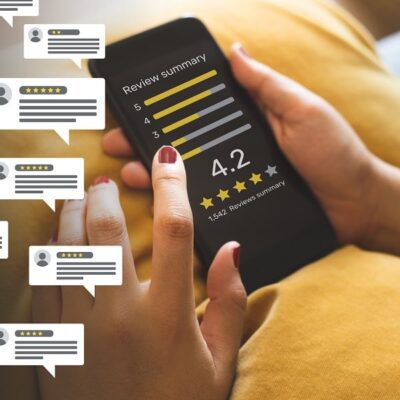“What Do a Street Prostitute and a Department Store Santa Have in Common?”
“Why Suicide Bombers Should Buy Life Insurance”
These are two chapter titles from the book, Superfreakonomics (there’s also a Freakonomics). The book is a great read, actually, but just as great are the chapter titles. Basically, they are irresistible and arouse enough curiosity that the reader “must” dig in to find out more.
And this is what all content writers want with their titles. They want to so capture a reader’s attention that s/he will convert – read the content and then, hopefully, share it, take a free trial, provide an email address, etc. – whatever conversion that content writer is looking for.
Getting to Those “Killer” Titles
All of us wish we were creative enough to spit out titles and headlines that compelled our readers. Unfortunately, most of us are not. But, like most other things of the world, there are some tips and tricks that can help us get there. Here are nine of them.
-
Put a Solution in the Headline
If you truly know your target audience and have developed a customer persona, then you know where their pain points are and what problems they want to be solved. Do you have a solution? Then it must go in the headline. If you sell a new deck material, then write a headline: “Never Stain Your Deck Again.” If you are offering a subscription-based product, perhaps a personal care item, your headline could read, “Never Forget to Pick Up (product) Again!”
When people see potential solutions to their problems, they want to know more. Just be certain that you are offering a real solution through your social media channel or blog post – nothing is more frustrating than to have a “promise” unfulfilled. Your headline promises – your content must deliver.
-
Amaze or Inspire
You’ve seen these types of headlines. If you receive the Upworthy feed on any of your social media platforms, then you have read headlines like these. They take time and thought to create. In fact, the staff at Upworthy states that it can take as long to come with a headline as it does to craft the article that goes with it. Granted, this is a group project with everyone submitting their “nuggets” and testing them, but the idea is to hit an emotional nerve with the reading audience.
You may be able to use a current news item or a shocking statistic. If you have a personal finance website/blog, for example, it might be shocking for your audience to read that student loan debt in the U.S. has now reached a shocking $1.3 trillion, that 44.2 million Americans have this debt, or that the average debt is now $37,172. Any one of these stats would make a compelling headline.
-
Ask a Question
But make it intriguing. Question headlines can be powerful if you follow two rules:
- Never ask a question that your readers can probably answer – they won’t read your content if they already know.
- Never ask a question to which your readers may answer “no.” Again, they won’t read it, because it does not relate to them.
Example: “Why is Belize the Best Kept Retirement Secret?” If your target audience is people in mid-life, and you happen to have a travel website or blog, a headline like this will intrigue. Most will not have the answer and will want to know why Belize might be a good choice. And, if the article that follows appeals, they will share it with their friends or request more information from you.
-
Offer a Secret Reveal
Anytime you can use the word “secret” in a headline, you have appealed to readers’ sense of mystery as well as their psychological desire to be part of an “exclusive club.” The title of this post has the word “secret” in it. Hopefully, you are getting some “insider information.”
-
The Word “New”
WD-40 was a product created specifically for lubrication purposes – fixing squeaky hinges, loosening up stuck screws or nuts, etc. Over time, however, customers found lots of additional uses for this product. Every so often, “new” uses are posted on the WD-40 site. It’s a great headline draw.
You may have lots of “new” information to share with your audience, but your headlines, even with the word “new” are not getting the play you want. These can be tricky. Sometimes it will help to get some professional assistance until you “get the hang of it.”
-
The Word “Now”
This word sparks a sense of immediacy and may compel readers to move on into your content. “10 Things You Can Do Right Now to Cut Your Grocery Bill” or 12 DIY Projects you Can Start Now and Finish by Nightfall.”
If the topic is one that you know appeals to your audience, you will have a winner.
-
Lists
Of course, this goes without saying. People love lists, particularly when they can solve a problem. They can be serious, humorous, or inspirational. “10 Ways to Break Off a Relationship” is one that comes to mind; or “8 Things You Can Do Today to Lift Your Spirits.” These are always popular because, like this post, the “things” or “ways” are broken up into numbered or bullet-listed chunks, and readers can scan and snack.
-
How To
“How To’s” in a subject line tell readers they are going to get some valuable information that may solve a problem or question they have. Again, these can be entertaining or quite serious, depending upon your purpose and the demographics of your audience. “How to Ignore Irritating Co-Workers” could have a variety of purposes, but anyone who has irritating co-workers will probably take the bait and read on.
-
The Word “Video”
This is an immediate compel because today’s consumer wants information and answers quickly. The promise of a video says that viewers will get what they want visually and without the need to scroll or click. Considering that the majority of people now access information via mobile devices, the word “video” in your headline is especially appealing.
To Remember
Words do still pack a punch. And that “punch” in your headline is what you need to engage a reader from the onset. Do not forget, however, that the content you provide following that headline has to be amazing and totally related to the headline you generated. If you try to “fool” your audience with trite, over-used, and stale content, you will lose readers/followers. The headline, while critical, is only the first step.









